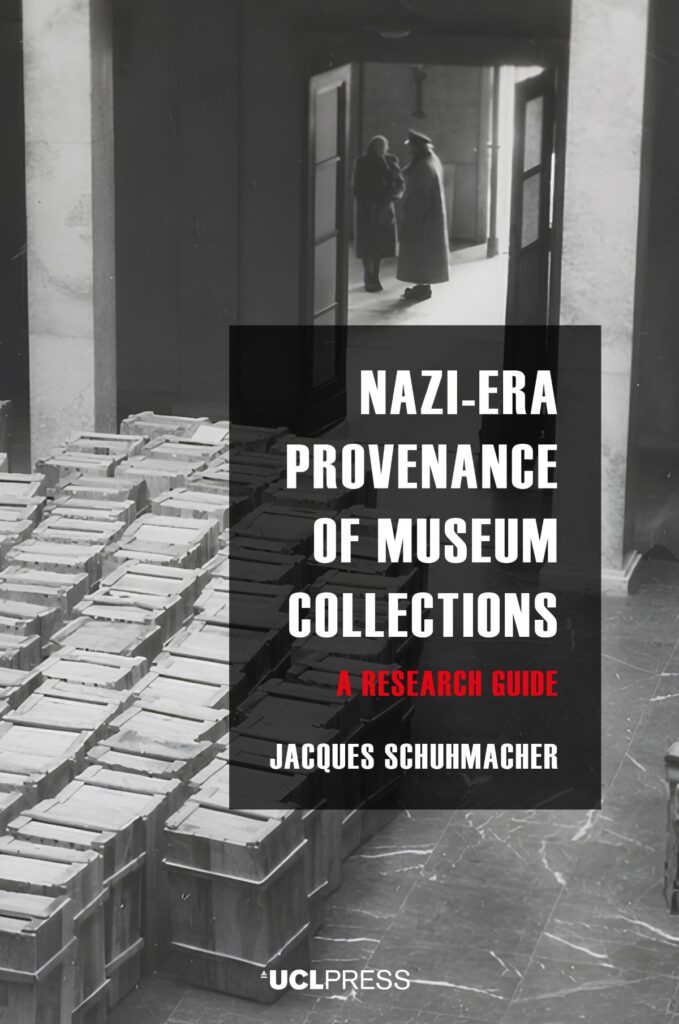
Amidst the chaos and devastation wrought by the Nazi regime in Europe, more than 650,000 works of art were stolen from Jewish citizens. By 1945 only a small fraction of the looted artworks had been returned to their rightful owners, as most were sent secretively to museums, sold at auction, purposefully destroyed, or even hidden in caves and salt mines.
Since then, museums in Europe and North America, including some that received looted art during and after the war, have become leading voices in research and restitution. Certain institutions employ in-house scholars to assist curators and other professionals in uncovering Nazi-era connections, such as the gumshoes in the archives of London’s Victoria and Albert Museum. Among them until very recently was Jacques Schuhmacher, former Senior Provenance Research Curator at the museum, and announced as the incoming Executive Director of Provenance Research at the Art Institute of Chicago as ANTIQUES was going to press. He is the author of Nazi-Era Provenance of Museum Collections: A Research Guide (UCL Press, 2024). “The aim of this research is not simply to add a name and date to an object’s record for the sake of archival completeness,” he informs readers. “It serves to ensure that the Nazis’ worldview and their actions do not live on unchallenged in the galleries and storerooms of our museums today.”
Schuhmacher was motivated to write his book after noticing a growing need for instruction from museum professionals and students. He also noticed that when colleagues encountered an object with questionable provenance, there was fear of overlooking potential Nazi affiliation. Purposefully vague to nonexistent paper trails were left by Nazis and their supporters, and stolen artworks aren’t limited to a single, easily traced category. Says Schuhmacher, “Jewish collectors were interested in a lot of different works of art—Christian art, African art, antiquities—so you can’t immediately look at the collection and know this is definitely problematic.”
Readers will also find an account of how the arts became a locus of antisemitic ideology. Jews were banned from museum premises, asterisks identified Jewish-owned goods at auction, and looted artworks were shipped in crates identified by the sinister catchall “Jewish property.” Nazis also extracted modernist works from museums, having deemed the movement—associated with Jewish artists and intellectuals—dangerous to German identity. A particular point of interest in these chapters is the Degenerate Art exhibition curated in 1937 by the director of the Reich Chamber for Culture, Adolf Ziegler, a show that displayed confiscated artworks made by 112 modernists, among them art stars Marc Chagall, Paul Klee, and Otto Dix.
Nazi-Era Provenance also explores the efforts of the Metropolitan Museum of Art director Francis Henry Taylor, who advocated for restitution prior to the end of the war, and the work of the Monuments Men and Women, who assembled some of the first catalogues of Nazi-looted art. Schuhmacher then time travels into the future with the 1998 Washington Conference on Holocaust-Era Assets, which he asserts paved the way for the restitution of Nazi-looted artifacts through an eleven-point statement that still influences restitution advocacy today. “The research methods are very simple. . . . It’s essentially looking at the documentation with the Nazi period in mind and then following it through the archives,” Schuhmacher says.
In the book’s foreword, artist Edmund de Waal, a descendant of prominent Jewish collectors in Vienna and author of the memoir The Hare with Amber Eyes, describes Schuhmacher’s text as “a testament to spending time with the unfinished nature of the archival.” With Schuhmacher’s strategies to draw upon, any individuals who might be hesitant about conducting provenance research will be better prepared to uncover the truth, or at least better understand their mission. Says Schuhmacher, “If you do this research, you’ll have nothing to lose . . . it will always improve what you know about the objects.”

